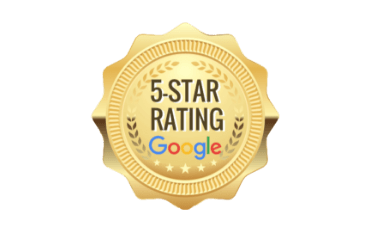
Still Hustling: What You Need to Know about CBD-rich Hemp Oil
In August of 2013, CNN published its article on the miraculous case of Charlotte Figi, a young girl in Colorado whose extreme seizure disorder left her weeks, if not months, from death. Her desperate parents decided to give their daughter something they had opposed in the past – medical marijuana – which cut down the severity and number of her seizures dramatically. The strain of plant from which the oil was made was bred to have much higher levels of cannabidiol (CBD) and less tetrahydrocannabinol (THC), minimizing its psychoactive effects while enhancing its medicinal properties. This strain, famously dubbed ‘Charlotte’s Web,’ became a point of national conversation when CNN’s Sanjay Gupta aired this story in February of 2014. For some, it offered hope of a treatment that, while not available to them as medical cannabis, could be gotten in other ways.
Taking advantage of this, new companies offered CBD products derived from hemp, instead of marijuana. They promised its curative effects while touting that it is legal in all fifty states. For many of these companies, a quick buck was more important than delivering a quality product to patients. The highly respected and non-profit organization Project CBD released a bombshell report in October of 2014, motivated by cases of patients becoming ill after using oils sold by these businesses. In that report, appropriately titled “Hemp Oil Hustlers,” they cautioned all consumers against blindly trusting these companies, and break down the legal and financial maneuvering that lets them escape scrutiny.
That document may have been published four years ago, but with no oversight, there is no guarantee that the problems it brought to light have been corrected. It is a risk that you do not have to take. With more states legalizing medical cannabis, there are many more reputable options to choose from, with guaranteed purity of the product and administered under the supervision of a qualified physician. This is assuming the reader is looking to cannabis for its medicinal properties – if you’re looking for a high, then shady online companies are your perfect match. And yes, as the authors, we do have a clear incentive to show you, the potential patient, that medical marijuana acquired through any state program is safer than a mystery product you can get online. But, if you are looking to make the best decision on where to source your medication, then you will need the whole story to make the best decision for you. That is what this blog will do, over this and the next weeks. It will not say one is certainly a better choice than the other; however, the facts will speak for themselves.
CBD – The Chemistry
When it comes to marijuana versus hemp, and CBD versus THC, the best place to start is with the plant itself. Marijuana and hemp are derived from the plants Cannabis sativa, Cannabis indica, and hybridizations of these two. Even within the C. sativa and C. indica species, there is a huge amount of variation in size, shape, and chemical content. This comes from the creation of sub-strains by growers selectively breeding for certain characteristics. “Marijuana” refers to the flowers of the plant, which are processed in any number of ways for recreational and medical use. “Hemp” refers to products of the seeds and stalks of the plant, which usually come from C. sativa because it grows larger – more plant means more stalk and more fibers to use for fabric.
As for the chemicals, those that are unique to the Cannabis family of plants are known as cannabinoids. The two most prominent ones, THC and CBD, have complementary effects in the body. THC is known as an orexigenic, which means that it powerfully suppresses nausea and vomiting while enhancing appetite; this is not surprising if you also know that this chemical is what creates the “munchies” in recreational marijuana users. THC is also the major psychoactive part of the plant, which creates the “high” that prompted cannabis’s classification as a prohibited substance. CBD does not have psychoactive effects, and repeated studies support its anti-convulsant, anti-inflammatory, and pain-relieving effects. Different strains of cannabis have different amounts of THC relative to CBD, and growers selectively breed their plants to select for one over the other. If you listen to all of the advertising from any source of cannabis products, if you want to have the medical benefits without the “stoned” sensation, the solution is as simple as having more CBD and less THC. But for many reasons, it is not that simple.
The interaction of any chemicals in the body will be much more complicated than advertisers would like. The effect of THC and CBD varies from person to person, and even in different parts of the body. The major receptors that these cannabinoids bind to are CB1 and CB2, which are found together in the brain and to varying degrees in other tissues. THC strongly promotes the activity of CB1, and to a lesser degree, CB2. In contrast, CBD indirectly acts against the activity of CB1 and CB2, and by extension THC. At the same time, studies appear to show that CBD increases the amount of THC in the body, by inhibiting the enzymes that break it down. Plus, both of these chemicals have potential interactions with many other receptors, which the scientific community is only now beginning to understand.
This is an example of how counter-intuitive these interactions are, and is the key thing to keep in mind. THC and CBD do not simply oppose each other’s effects; they are complementary, and depend on the amount of each relative to one another. You could have the same amount of CBD, different levels of THC, and see very different effects. But, with products from hemp, the THC is naturally at an extremely low level, so that any positive effects that could come from their combination is not possible.
There are over one hundred other cannabinoids in addition to THC and CBD, with several that have shown medical value. Just to run through a few: alpha-pinene, is a bronchodilator and anti-inflammatory agent; myrcene, has a clear anti-anxiety effect; caryophyllene, increases the amount of CB2 receptors, enhancing the anti-inflammatory effect of other molecules that bind them; and cannabichromene, which shows some promise as an anti-depressant that also acts on the TRPV1 receptor involved in the sensation of pain. All of these make their way into oils and edibles for the consumer, because the process which pulls these cannabinoids out of the plant material is not specific. It is almost a given that the interactions between these, and CBD, are critical in the benefits that patients can experience with medical cannabis. One can refine the oils from the extraction process, selecting for one molecule – but it is extremely expensive, to the point where it is rarely used by commercial suppliers of oils. Usually, the oil that comes from the plant the first time, is not very different from the final product.
CBD – The Human Factor
State-certified cannabis dispensaries and companies must account for these major cannabinoids, where unregulated out-of-state growers do not. There is a reason why medical marijuana dispensaries in Florida, for example, have products that come from just one sub-strain of C. indica, one sub-strain of C. sativa, and one hybrid sub-strain. Licensed growers reliably bred these over many generations, to achieve the optimal balance of all the major cannabinoids which reduces the side effects and promotes the positive effects for patients. A key difference in how hemp and medical marijuana are cultivated is important in creating these strains: medical cannabis is grown indoors under tightly controlled conditions, whole almost all hemp is grown outdoors. This is due to the need to control the light exposure for the flowers that become prescription cannabis. It does create a possibility of contaminants making their way into the supply chain for hemp oils, which does not exist for medical cannabis.
Greater control of the amounts of the cannabinoids in patient’s products could be discovered with more interest by the scientific community. But, the ban on cannabis does not end with the plant. It, and all of the major cannabinoids, are Schedule 1 substances that are illegal to produce, transport, or distribute by federal law. Naturally, this makes the process of getting research approved on these substances very difficult. This helps to explain the research gap on these, despite the preliminary evidence that almost all of the cannabinoids have significant medical value.
It is a gap that has to be filled by advocacy and private organizations, one of which is the highly respected Project CBD. After the boom of interest in CBD oils stemming from CNN’s special, Wall Street took note of the largest players on the hemp oil market. The activity of Medical Marijuana Inc. in particular, led Project CBD to begin compiling a report to “shed light on the complex financial machinations” of the company, with the intent to inform the broader public and market analysts. As the report continued, cases of persons taking some of these oils who then became “violently ill” came to light, leading the authors to take a closer look at the company. They would uncover a web of shell companies, fraud, and poor business practices that infested the largest players in the hemp-derived CBD market.









